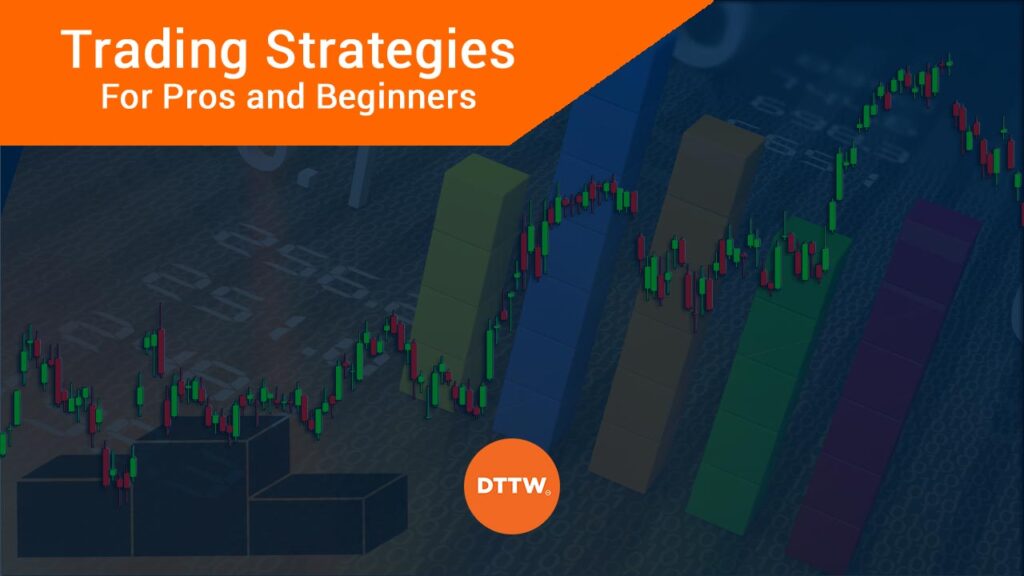A trading strategy is the routine or plan of action that you use to achieve your goals in the financial market. In our experience, having a solid and well-thought strategy will help you make money in the market. It will also help you simplify the trading process because of the routine you will only buy and sell assets when your conditions are met.
There are many trading strategies in the financial market. Some of these strategies are quantitative or algorithmic, swing trading, breakouts and fakeouts, and trend following. In short, there is something for everyone.
In this article, we will look at the top three strategies that you should be aware about regardless of your experience.
Breakouts
A breakout is defined as a period when a financial asset starts a new trend after being in consolidation for a certain period. For example, if a stock remains between $10 and $12 for a few weeks, the breakout will happen when the stock moves above $12 and continues moving in an upward trend. A bearish breakout happens when the stock moves below $10 and continues with the bearish trend.
Breakouts offer some of the best opportunities for a trader to make money. Besides, they are relatively easy to predict and there are several approaches to play them.
To trade breakouts effectively, you need to understand some of the popular trading patterns that happen in the financial market. These patterns are mostly classified into reversal and continuation.
Reversal and continuation
A reversal pattern happens when a financial asset reverses and starts a new trend. Examples of these patterns are head and shoulders and double top and double bottoms.
Continuation patterns, on the other hand, are usually signs that a financial asset’s price will continue with the original trend. These patterns include ascending and descending triangles, pennants, flags, and cup and handle pattern.
Breakout strategies
One of the easiest methods to trade breakouts is to use bracket orders. A bracket order is one that is made up of several pending orders and stops.
For example, think of a rectangle channel whose support and resistance are at $10 and $12. In this case, you could place a buy-stop at $13 and a stop-loss at $10 and a take-profit at $16. At the same time, you could place a sell-stop at $9 and a take-profit at $7 and a stop-loss at $12.
Now, if there is a bullish breakout, the initial buy stop trade will be initiated and then it will be stopped at the take-profit level. Similarly, if there is a bearish breakout, the sell-stop trade will be initiated. It is worth noting that the fixed stop loss could be replaced by a trailing stop loss that moves with the trade.
Be careful. Sometimes you can run into false breakouts.
Buy the dip / sell the rip
Another trading strategy you need to know about is known as buying the dip or selling the rip. Their meaning are straightforward. A dip is defined as a major decline that mostly happens when stocks or other assets are in an upward trend. In this case, when the dip happens, you can easily buy the asset at a relatively cheaper price and benefit as its price keeps rising.
Meanwhile, selling the rip is a situation when there are limited hopes that the asset will continue rising after making a major dip. In this situation, you could make money by shorting the asset. You will benefit when the price keeps falling.
There are several reasons why these dips happen, let’s see some examples together.
Why dips happen
Dips happen when there is a major news event that affects a financial asset. It could happen when a company announces weak results or when the central bank suddenly turns hawkish. Also, a dip could happen when a stock or any other assets reaches its distribution zone. This is where investors who benefited from the bull run starts selling.
How to trade the dips
While there are several strategies of trading dips, we recommend that you use Fibonacci retracements. If an asset drops below the 50% retracement level, it means that sellers are overwhelming the buyers and that the price wil keep falling.
You could also use technical indicators and harmonic patterns like XABCD to trade these situations. Some of the most popular technical indicators you could use in this case are moving averages and oscillators like the Relative Strength Index (RSI) and the MACD.
Breaking news / volume
The next trading strategy that you should know is using volume especially when there is a breaking news. Volume refers to the overall amount of asset that is traded in a certain period. For example, if a stock has an average volume of 1,000,000, and then it suddenly rises to 5 million. It means that the volume is rising.
In most cases, a stock will tend to show some volatility after a major news event. Some of the most common breaking news that affect equities are management changes, product recall, earnings, and the entry of a new investor.
Therefore, if the jump happens, you will likely see more volume. Now, if you see the volume starts falling or bearish volume starts rising, it is a sign that a reversal will happen.
You could use some of the popular volume indicators like volume, money flow index, and accumulation and distribution indicator to trade during these conditions.
»How to Trade Breaking News Continuation Moves«
Summary
There are many trading strategies that you can use in the financial market. Still, we believe that these three strategies are the most common for traders of all levels.
External useful resources
- Top 10 Ways to Quickly Improve Your Trading Skills – Modest Money
